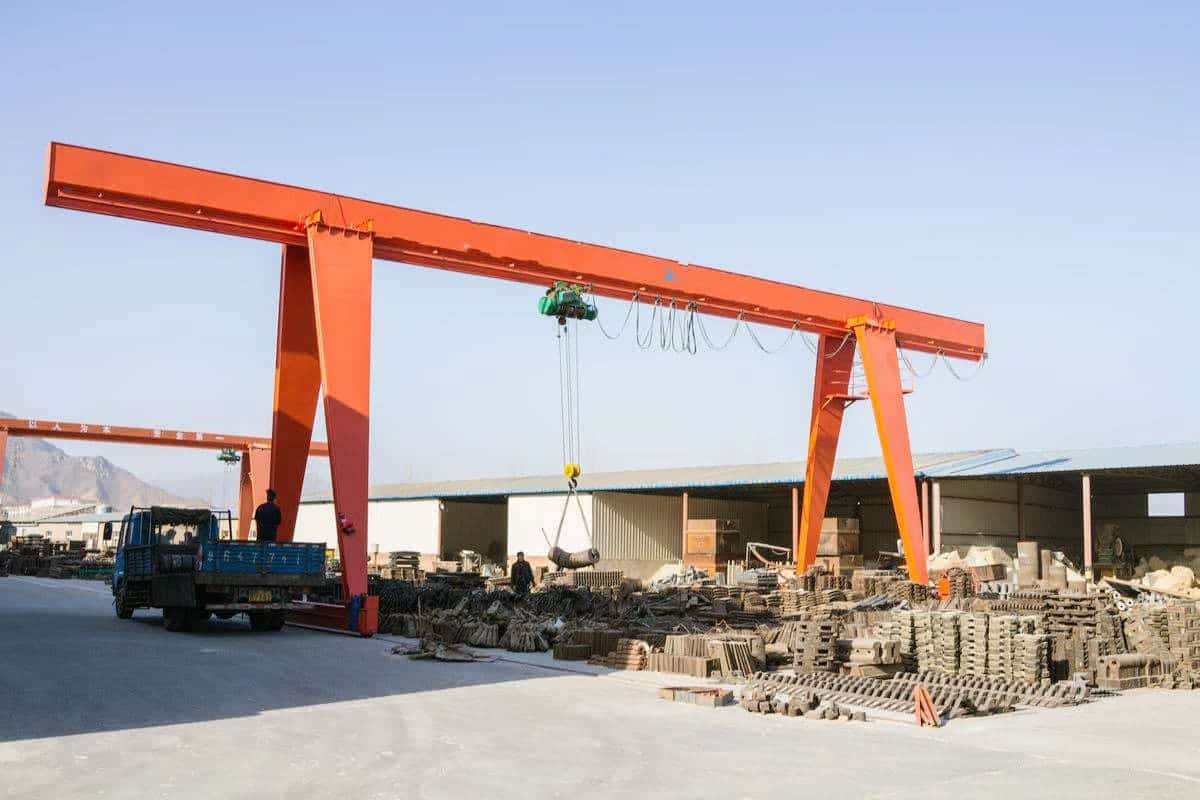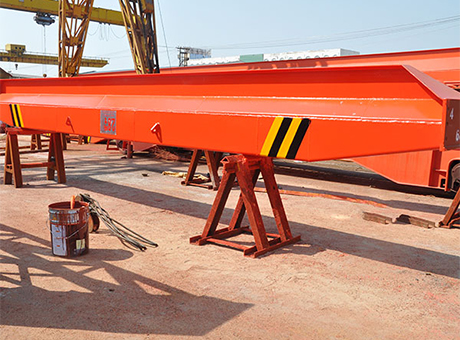First: Insulated Bridge Cranes
Insulated bridge cranes refer to cranes that work in the environment of smelting workshops of non-ferrous metals such as electrolytic aluminum, magnesium, lead, zinc, and copper.
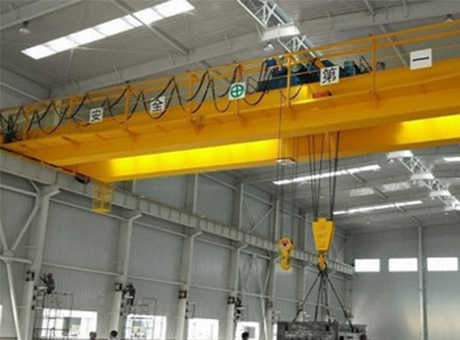
1. Insulation requirements for insulating bridge cranes
(1) The crane should be equipped with three insulations: hook and pulley, lifting mechanism and trolley frame, trolley frame and cart. The electric positive value of each insulation measured with a 1 kV megohmmeter at normal temperature (temperature 20 ~ 25 ℃, relative humidity ≤ 85%) should be ≥ 1 MΩ.
(2) The hoisting mechanism of the crane should be equipped with double brakes, electromagnetic block brakes should be preferred, and the safety factor of each brake should be ≥ 1.25.
(3) When the crane is not working, the induced voltage on the trolley frame should not exceed the safe voltage value of 36 V.
2. Requirements for working environment conditions of insulated bridge cranes
(1) The power supply of the crane is three-phase alternating current, the frequency is 50 Hz, and the voltage is 380 V. The upper limit of the allowable voltage fluctuation on motors and electrical appliances is 10% of the rated voltage, and the lower limit (at peak current) is -15% of the rated voltage, and the internal voltage loss of the crane should comply with the “Design Code for Cranes” (GB/T 3811—2008) Provisions.
(2) The installation of the running track of the crane should meet the requirements of “Crane Wheels and Tolerances of Cart and Cart Tracks Part 1; General Rules” (GB/T 10183.1-2018).
(3) The altitude where the crane is installed and used should not exceed 2000 m (if it exceeds 1000 m, the motor capacity should be checked).
(4) There must be no flammable and explosive gases in the working environment.
(5) The radiant heat temperature of the hoisted items to the parts of the crane spreader shall not exceed 300 °C.
(6) The climatic conditions for the normal operation of the crane are as follows:
1) The ambient temperature is -5 ~ 50 ℃.
2) The relative humidity at 50°C should not exceed 50%.
the
Second: Metallurgical bridge crane
Metallurgical bridge cranes are special cranes suitable for metal smelting, rolling, manufacturing and thermal processing enterprises, including material box cranes, forging cranes, slab handling cranes, casting cranes, quenching cranes and rake cranes.
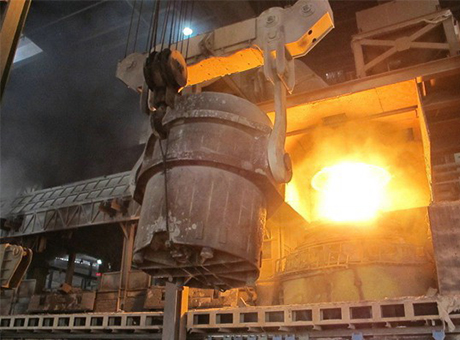
1. Classification and requirements of metallurgical bridge cranes
(1) Material box crane. The material box crane is a crane that uses the material box hanger to hang, carry and dump the material box for feeding the converter. It uses two sets of lifting mechanisms, one of which is used to dump the material box.
(2) Forging cranes. Forging cranes are bridge cranes with devices for lifting, buffering and turning over forgings, and have the following requirements:
1) The main and auxiliary trolleys generally work together, but it is allowed to lift items separately.
2) The hoisting mechanism of the main trolley is equipped with a load buffer and brake release device. When the load exceeds 1.1 times the rated lifting capacity, the brake is released, and the hoisting mechanism is dragged in the opposite direction in the downward direction. The movement limit switch is turned on and the hoisting motor is also turned on. At this time, a rapid descent can be realized.
3) Under the condition that the main hook does not affect the performance of the hook, it is allowed to open a hole on the hook body, so that it is convenient to wear the hook pin shaft to hang other lifting gear; Anti-scratch hook pad. The auxiliary hook device should be equipped with a load buffer device.
4) Turner and hook suspension shaft should be equipped with anti-sensing shaft sleeve. The turning mechanism of the turner should be equipped with a limit torque device. When the rotation torque exceeds 1.1 times the rated torque, the limit torque device will immediately play a protective role.
(3) Crane for slab transportation The slab counting crane is a crane with clamps, product hooks, electromagnetic suckers and dual-purpose or three-purpose cranes for handling slabs, and has the following requirements;
1) The chain tip of the clamp of the crane for board transportation should use heat-resistant and wear-resistant alloy, the opening and closing mechanism of the clamp should have heat insulation protection measures, and the electrical components on the clamp device should be resistant to high temperature.
2) A special cable reel should be set up for the clamp device, and heat protection measures should be taken.
(4) Casting cranes Casting cranes are cranes for lifting molten metal, which have the following requirements:
1) The main hoisting mechanism should be equipped with overspeed protection
2) The effective lifting point of the main lifting mechanism should adopt four wire rope winding systems, and a single lifting point should use at least two wire rope winding systems. Balance pulleys should not be used in winding systems.
3) A reliable anti-radiant heat device should be installed under the lower flange plate of the main girder.
4) The lower part of the lifting plate should be equipped with anti-radiant heat device, and the moving pulley block with steel wire rope wrapped at both ends should have a protective cover.
5) When the rated lifting capacity is not more than 16t, the electric hoist can be used as the lifting mechanism. When the rated lifting capacity is greater than 5t, the electric hoist should be equipped with a safety brake in addition to a working brake; when the rated lifting capacity is less than or equal to 5t, a safety brake should also be installed, otherwise the electric hoist should be designed according to 1.5 times the rated lifting capacity . The electric hoist with high temperature and heat insulation function should be selected, and the working level should not be lower than M6 level.
(5) Quenching crane. The quenching crane is used in the quenching heat treatment process of vertical wells, and has the functions of rapid descent and emergency brake release in the event of an accident. The following requirements are required:
1) The crane should be able to adapt to the working environment eroded by harmful gases such as oil vapor and smoke. 2) The lifting mechanism should be equipped with a downstroke limit device.
3) The crane should have a rapid descent function and an overspeed protection device. When the hoisting mechanism descends rapidly, it should not act simultaneously with other mechanisms. The braking distance of the rapid descending system should generally be controlled within 1/65 of the rapid descending distance within 1 min, and the daily maximum should not exceed 500 mm.
4) An insulated cab should be used. Cooling facilities should be installed in the driver’s compartment, and necessary emergency escape measures should be provided
5) A protective cover should be installed at the movable pulley block of the hook to prevent quenching oil from splashing. the
6) Steel core structure steel wire rope should be used.
7) The emergency brake release mechanism should respond quickly, be flexible and reliable, and be easy to operate.
(6) Raw cake crane. The rake crane is a crane for handling and stacking bar-shaped billets in the continuous casting and rolling process of steel mills. It has the following requirements:
1) When the crane is working with an electromagnetic chuck, the temperature of the lifted billet should be lower than the allowable working temperature of the electromagnetic chuck. The working temperature of the warm electromagnetic chuck should not exceed 100 ℃, and the working temperature of the high temperature electromagnetic chuck should be controlled at 100-600 ℃.
2) The crane should keep the lifting and lowering of both sides of the rake beam synchronous and the turning of several rake teeth synchronously, and no deflection should occur. Anti-swing measures should be taken for flexible rake cranes.
3) When the slewing mechanism is powered by no slip ring, a limit switch for the slewing limit should be set. A buffer limit device and an electronically controlled interlock system should be installed.
4) Limit interlocks should be set up between the operation of the crane, the operation of the trolley, and the slewing mechanism to prevent the crane and materials from interfering with the workshop.
In the special case of metallurgical bridge cranes hoisting molten metal, a second-level lifting height limiter should be installed to prevent overtravel to the top, and the second-level lifting height limiter should cut off the higher-level power source .
2. Requirements for working environment conditions of metallurgical bridge cranes
(1) The power supply of the crane is generally three-phase alternating current, the frequency is 50Hz or 60 Hz, and the voltage is 380V. For large metallurgical bridge cranes, when the capacity of the single-mechanism driving motor exceeds 400 kW, or the total capacity of the motor exceeds 500 kW during use, it is recommended to use a three-phase AC, 50 Hz, 3 kV power supply. Under normal working conditions, the voltage fluctuation of the power supply system at the access point of the crane feeder should be within ± 10% of the rated value.
(2) When the altitude where the crane is installed and used exceeds 1000 m, the motor capacity should be checked according to the provisions of “Rating and Performance of Rotating Electric Machines” (GB/T 755-2019).
(3) The working environment temperature of the crane is generally -10 to 50 °C, and the relative humidity does not exceed 50% at a temperature of 0 °C.
(4) There must be no flammable, explosive and corrosive gases in the site where the crane is used.
(5) The installation of the running track of the crane shall comply with the provisions of “Crane Wheels and Tolerances of Cart and Cart Tracks Part 1: General Rules” (GB/T 10183.1-2018).
Thirt: Electric Single Girder Crane
The electric single-beam crane is a general-purpose crane with an electric motor as the lifting mechanism, and the main girder is a single girder, as shown in Figure 2-4.
the
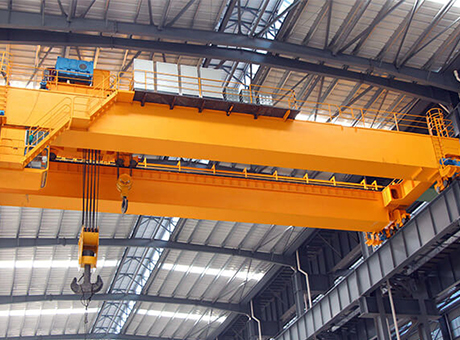
1. Basic composition of electric single girder crane
Electric single-girder cranes are generally composed of bridges, electric hoists and lifting mechanisms, cart operating mechanisms, electrical equipment and safety protection devices;
The bridge part is mainly composed of the main girder, the end girder, the conductive support of the trolley, the control room, etc. The electric hoist and the trolley constitute the lifting mechanism, which can move longitudinally along the main girder. The traveling mechanism of the trolley is generally driven separately.
The recommended camber value of the main beam is (1/1000-1.4/1000) S.
The electrical equipment adopts corresponding configuration forms according to different modes of cab manipulation, ground manipulation or remote control manipulation. Crane cables can use trolley wires or cables. The operation of the electric hoist is fed by cables or slip-on transmission devices.
The safety protection devices that should be installed include lifting weight limiter, lifting height limiter, descending depth limiter (as required), running stroke limiter, interlock protection safety device, buffer, wind resistance and anti-skid device (outdoor working), track cleaners, end stoppers, protective covers for exposed moving parts, rainproof covers for electrical equipment (when the protection level of outdoor work cannot meet the requirements), the safety protection devices that should be installed include anti-collision devices .
2. Types of electric single-girder cranes
(1) According to the position and operation mode of the lifting mechanism, electric single-girder cranes are divided into electric hoist trolleys running on the lower flange of the main girder, and cranes equipped with standard building height trolleys; equipped with low building height trolley cranes; electric hoist installations Cranes on angular trolleys. The corner cart is shown in Figure 2-5.
(2) According to the operation mode, electric single-girder cranes are divided into cranes operated by the cab and cranes operated on the ground.
3. Working characteristics and uses of electric single-girder cranes
The working space of the electric single girder crane is the same as that of the general bridge crane.
When the electric single-girder crane is operated by the cab, it has the same working characteristics as the general bridge crane; when it is operated by the ground or remote control, the control is simple and the operation is convenient.
Electric single-girder cranes are widely used, suitable for lifting and handling in machining and parts assembly workshops, and suitable for lifting operations in warehouses and stockyards.
4. Requirements for working environment conditions of electric single-girder cranes
(1) The power supply of the crane is generally three-phase alternating current, the frequency is 50Hz or 60Hz, and the rated voltage is 220-660V. The upper and lower limits of the allowable voltage fluctuation on the motor and electrical control equipment are ±10%, and the internal voltage loss of the crane should not exceed 3%.
(2) Cranes generally work indoors, and the working environment temperature is generally -20-40°C. When the ambient temperature is 25°C, the relative air humidity should not exceed 85%.
(3) The operating conditions of the electric motor shall comply with the provisions of “Rating and Performance of Rotating Electric Machines” (GB/T 755-2019).
(4) The normal use, installation and transportation conditions of electrical appliances should comply with the provisions of “Low-voltage Switchgear and Control Equipment Part 1 General Rules” (GB14048.1-2012).
(5) The installation of the running track of the crane shall comply with the provisions of “Crane Wheels and Tolerances of Cart and Trolley Tracks Part 1: General Rules” (GB/T 10183.1-2012).
(6) Not suitable for environments with explosive gas, combustible dust and corrosive gas, not suitable for lifting molten metal, flammable and explosive items.
5. Electric wire rope hoist for crane
The wire rope electric hoist is an electric hoist whose lifting flexible part is a wire rope.
(1) The wire rope electric hoist used by the crane has the following types:
1) Monorail trolley type; an electric hoist with a running mechanism and the lower flange of the monorail as the running track.
2) Double-girder trolley type: It consists of an electric hoist and a double-track electric trolley frame, and the hoist trolley runs along the two tracks on the double-girder bridge frame.
3) Single main girder angular trolley type: It consists of a fixed electric hoist and an angular electric trolley frame, and the trolley runs along two tracks installed on the single main girder.
(2) The basic requirements of wire rope electric hoist are as follows:
1) The power supply of the main circuit of the electric hoist is three-phase alternating current, the frequency is 50 Hz or 60 Hz, and the rated voltage is 220-660V. Greater than 85%. The altitude does not exceed 1000 m. There must be no flammable, explosive and corrosive gases or flammable and explosive dust in the working environment.
2) The electric hoist with single-layer winding should be equipped with a rope guide, and the electric hoist with multi-layer winding should take measures to prevent messy ropes.
(3) The structural composition of the wire rope electric hoist and the transmission principle of the working mechanism.
The wire rope electric hoist is mainly composed of a lifting mechanism, a running mechanism (not in the fixed electric hoist) and an electrical control device.
After the lifting motor is energized, it directly drives the input shaft of the reducer through the coupling and the intermediate shaft, and the output shaft of the reducer drives the reel to rotate, winds the wire rope, and lifts the hook.
After the running motor is energized, the wheel is driven to rotate through the reducer, so that the small wheel walks on the I-beam.









